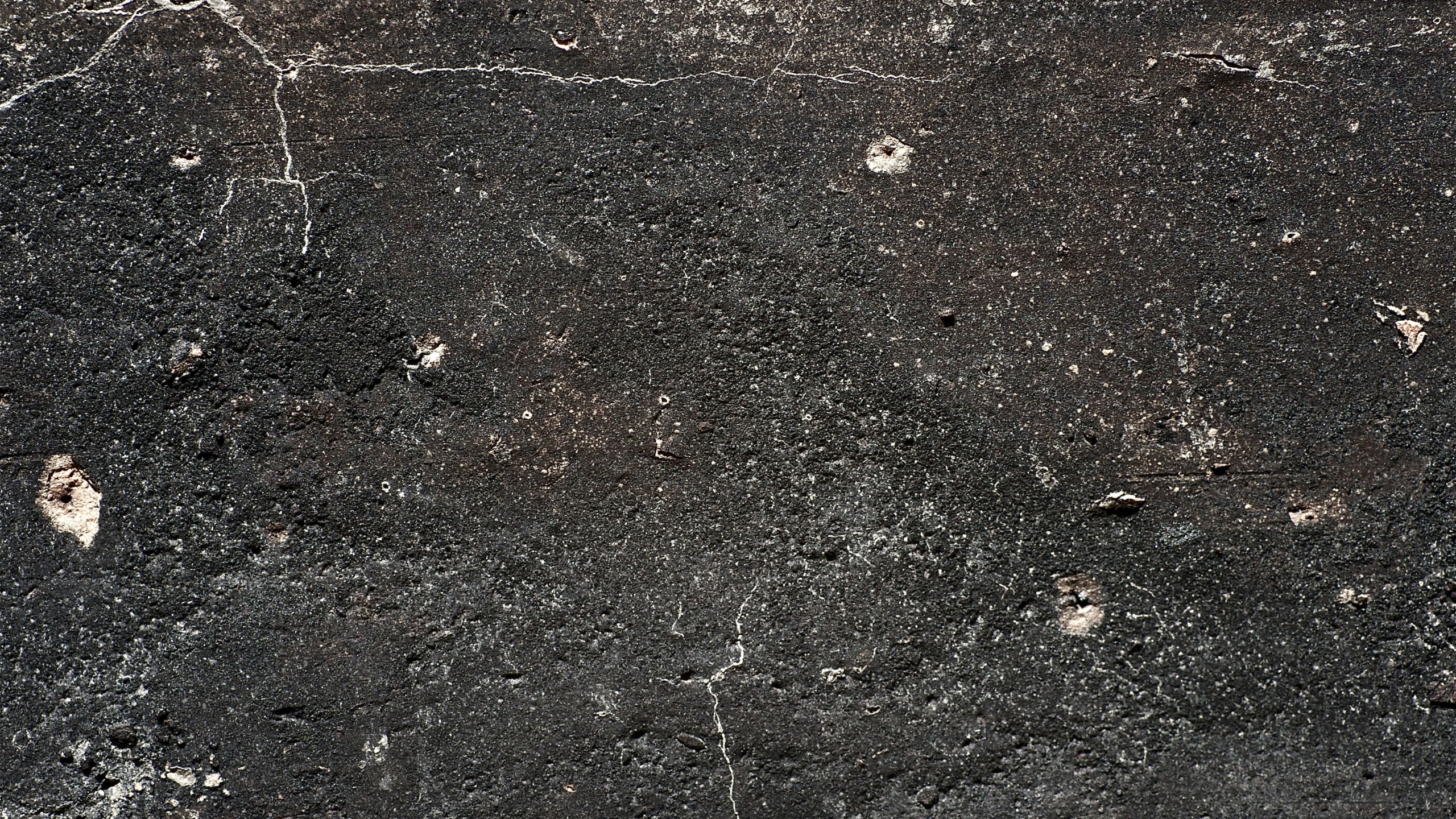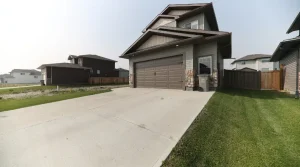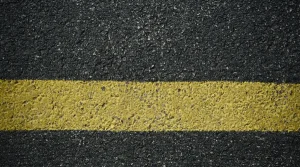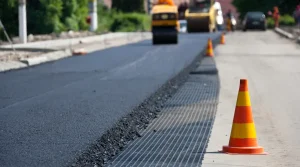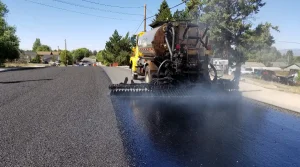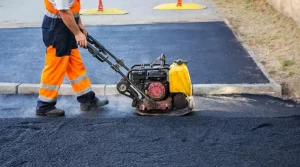Pavements composed of individual segments typically offer easy repair or replacement, blending seamlessly with the surrounding area. However, pavements crafted from a single large piece, such as tarmacadam or concrete, require cutting and patching when damaged, often resulting in conspicuous marks.
Looking for a dependable paving company? Reach out to us at 201-514-6060. Our committed team is ready to assist you with prompt and courteous service. With our skilled professionals and diverse project experience, we consistently deliver exceptional results. We prioritize efficiency and effectiveness to ensure complete client satisfaction. At Paving Hackensack, quality is our top priority in every project.
Replacing individual elements
This method can be used for brick, block, flagstone, and any other type of paving made of individual units.
Replacing block paving requires removing the current blocks and installing new ones.
To replace a single unit or a section of paving, the specific unit must be completely removed from the pavement. If other units need removal, they can be easily taken out afterward. Two simple methods are available for removing this initial unit.
The non-invasive approach
Using the non-destructive method, we delicately raise the unit using a trowel or the heel of a bolster, softly separating two opposite edges of the block or flag. While the illustration demonstrates removing a block, the procedure remains consistent for flags. With the levers positioned, we steadily elevate the unit by gently wiggling it upward, making slight adjustments on each side until it detaches from the pavement. Typically, this approach preserves the integrity of the block, allowing for its reuse.
- Use the tip or heel of the trowel to raise one side of the block. Initially, a half-block is removed to ease the insertion of the trowel tip/heel.
- The first trowel is used to hold the initial (cut) edge elevated, while the second trowel lifts the opposite side.
- Continue gently wiggling the trowels to gradually lift the sides alternately until the block loosens and can be removed.
The destructive method
You can use a sharp chisel to penetrate the block and then leverage the broken parts out from the pavement. The chisel, or a pointed one, should be driven into the block at around a 30° angle from vertical until the block fractures. It’s crucial to recognize that this method renders the block unusable. Therefore, make sure you have spare or replacement blocks on hand to replace the broken ones.
Once the initial unit is removed, adjacent units can be relatively easily extracted by applying leverage from underneath. For flags, it may be necessary to cut out any mortar joints to release them, while blocks may occasionally be firmly held by jointing sand, requiring a gentle wiggle to dislodge them. It’s important to note that certain blocks and bricks, particularly clay pavers, have two usable surfaces. Flipping them upside down can reveal a new, undamaged, or unmarked face.
Extract the required section of the pavement, stacking the blocks nearby for future use. Remove any jointing sand clinging to the block edges or mortar adhering to the flag edges. Prepare the exposed bedding layer by floating, troweling, or screeding it to suit the replacement of paving units. Adjust bedding material as necessary for leveling purposes. For larger areas, confirm the surface level of the bedding layer using straight-edge timber and one of the salvaged blocks as a guide. Maintain the bedding layer approximately 5mm higher to accommodate re-compaction.
Once the bedding is prepared, reinstall the blocks/flags as required, utilizing spare or replacement units as needed, and secure them with dry jointing sand or mortar joints. Ensure thorough re-consolidation of the repaired area, preferably using a vibrating plate compactor for a block or small-element paving or a roller for other flags. Reassess the level of sealing sand after 3-4 weeks and top up if necessary.
When you replace damaged or stained block paving with new ones, the new blocks might stand out due to their brighter appearance. To minimize this contrast, we supply each client with extra blocks that closely resemble the originals. This ensures that the replacements come from the same batch, as manufacturers may change their production methods over time.
When batch-matched paving isn’t accessible, the visual disparity caused by new blocks can be lessened by integrating them with clean existing blocks gathered from the nearby area of staining. For example, if there’s one m² stain, we might lift two m² of paving, discard the spoiled blocks, mix in the replacement blocks, and reinstall the entire area.
In most instances, after 12 months, it takes a lot of work to discern between the original paving and the replacements.
Replacing flags/slabs
For other types of pavements that are mortared in, the replacement method closely resembles what was previously described for block paving. The mortar joint must be removed, ideally with a power saw, although it can also be chiseled out using a hammer and bolster. Once the paving unit is leveraged out of the pavement, it should be stored or discarded as necessary, and the bedding layer should be prepared for resetting the unit. Apply mortar to the receiving edges of the pavement before reinstalling the units. Use a pavior mall to tap them down to level, then proceed to repoint the joints.
Patching non-elemental surfaces
Tarmacadam, concrete, pattern imprinted concrete (PIC), and resin surfacing are classified as ‘monolithic’ rather than modular, meaning they can only be repaired in patches. However, these patch repairs typically remain conspicuous despite attempts to conceal them. PIC and resin surfaces pose particular challenges in repair, often resulting in glaringly obvious patches. Even bitmac, usually perceived as ‘black,’ proves challenging to match in terms of color, texture, wear, and weathering.
In most instances, it’s recommended to engage the original contractor for repairing or patching these surfaces whenever feasible. They are likely well-acquainted with the materials and techniques employed initially, offering the best opportunity for effecting a less conspicuous repair.
Patching Tarmacadam
Outline the patch area, ensuring sufficient working space and staying clear of any cracks or crumbling, maintaining a distance of at least 100mm. Employ a dust-suppressed Power Saw to cut through the surface along the entire perimeter of the repair zone. Remove the unwanted surfacing using chisels, a jackhammer, or a pick and spade, and dispose of it off-site. The saw cuts ensure a clean, straight edge for the patching process. While a standard handheld cut-off saw usually suffices, a trolley-mounted floor saw is preferable for larger areas.
Before applying new material, cover the vertical edges of the cuts with a jointing compound called “cold pour,” obtainable from civils merchants. This compound efficiently seals the joint, inhibiting water penetration beneath the surface, which could result in repair failure during freeze-thaw cycles.
For the repair, it’s recommended to use a fresh, hot bitmap, apply it in at least two layers, and compact each layer with an asphalt tunnel, vibrating plate compactor, or roller. Seal the ‘seams’ of the repair with cold pour compound (as mentioned earlier) to prevent water infiltration. Although this may make the repair more noticeable, it significantly reduces the risk of failure caused by water penetration into the joint.
Macadam suppliers typically prefer orders of 3 tonnes or more, and they might impose high part-load charges for smaller quantities. Nevertheless, some batch plants may cater to smaller loads, like half a tonne, on a trailer or private wagon. When transporting macadam, it’s vital to cover the material with a tarp or similar to preserve as much heat as possible. Otherwise, it can become difficult to handle.
FAQ
Using pre-packaged macadam
Many builders’ merchants provide pre-packaged repair macadam, which can be considerably more economical than ordering hot bitmac in small quantities. Typically priced around £8 for 25kg, this equates to £320 per tonne, compared to £50-60 per tonne ex-works. However, for loads less than 1 tonne, batch plants often levy a part-load charge of approximately £150-180. Hence, quantities exceeding 1 tonne are best procured as hot, fresh material.
As a reference, a 25kg bag of repair bitmac usually covers approximately 0.45m² at a thickness of 25mm. However, it’s crucial to maintain a minimum depth of 70mm for any macadam surface. At this thickness, the coverage decreases to about 0.16m² per 25kg bag, necessitating slightly over six bags to cover each square meter.
The pre-packaged tarmacadam is treated with a cutting agent or “doped” to delay setting until it is exposed to the air, allowing the doping oils to evaporate over time gradually. Although the packs are supplied cold, they perform optimally if left in a warm area for several hours before use. Once unpacked, the tarmacadam is spread out as required and compacted to level, following the same procedure as with hot tarmac. It may take several weeks for the doping oils to evaporate completely, but the compacted surface should be usable almost immediately.
If the surface of the repaired tarmacadam remains tacky and adheres to car tires or shoe soles, sprinkle a fine sand over it, akin to flour on a work surface, before rolling out the pastry. The sand will gradually wash away over time.
These pre-packaged repair tarmacadams are somewhat lacking. Although suitable for very minor repairs, we advise against using them for areas larger than a couple of square meters. They remain soft for several weeks and are vulnerable to penetration by any point load, such as a motorbike’s side stand or a lady’s stiletto heel.
To patch areas spanning from 2 to 20 m², you might find a local tarmacadam contractor willing to order an extra tonne or so if you offer them beer vouchers as an incentive.
Bitmac cover-ups
Numerous products available on the market allow you to rejuvenate an existing tarmacadam surface, providing it with a renewed appearance. Some act essentially as paints, while higher-quality options actively adhere to the existing tarmacadam and revitalize the bitumen binder. These products yield the best results when applied to cover an entire driveway or courtyard rather than just touching up patches.
Referred to by various names such as Tarmac Sealers, Tarmac Sealcoats, or Tarmac Paints, there is an increasing number of alternatives available Nonetheless, it’s vital to choose the best product for each individual particular task carefully.
They can effectively mask minor imperfections or patches on tarmacadam surfaces or revitalize the appearance of a tired driveway. These products are sometimes available at builders’ merchants, larger DIY stores, and construction chemical suppliers in standard black or burgundy red shades. However, for smaller quantities, they may need to be specially ordered.
The macadam surface designated for treatment should be meticulously cleaned and free of dust and debris. Our standard procedure involves power-washing the surface and allowing it to dry before applying the seal coat product. Typically, two coats are required, and we recommend using a long-handled squeegee for application to minimize strain on the back. To apply the next layer, let the previous one completely dry. one. Usually, they dry within 2-3 hours and can withstand traffic once completely dry.
Patching concrete
Like macadam (bitmac/tarmac), repairing concrete often leads to visible alterations. Due to diverse factors, achieving an exact match with the existing surface is usually impractical or unattainable. Even if an exact match were possible, noticeable lines would persist where the old surface was cut out and the new surface installed.
This holds regardless of whether it’s a simple, plain concrete surface or a highly embellished, colored, and textured pattern imprinted surface. Achieving an invisible repair is not feasible.
Stains alone usually aren’t sufficient justification for breaking out and patching a concrete bay. However, specific situations require concrete renewal, such as salt or frost damage, repairs to underground services, or the removal of harmful tree roots. This section will cover two types of repairs: shallow surface repairs and full-depth repairs.
Shallow repairs
This approach is suitable for addressing minor surface imperfections or flaws, such as salt and frost damage. Begin by marking out the area to be repaired and cutting the perimeter with a power saw to a depth of at least 40mm. Next, remove the damaged concrete surface by chipping it out with a hammer and chisel or using a demolition hammer from a hire shop. When replacing salt or frost-damaged concrete, ensure that all loose and unsuitable material is removed to a depth of at least 40mm. Thoroughly clean the repair area and brush away as much dust as possible.
Afterward, treat the exposed concrete surface with PVA or SBR bonding agents or clean it with an acid-etching fluid. The fresh concrete intended for the repair should be a high-strength mix supplemented with PVA, SBR, or a hardening agent. Generally, granolithic concrete is favored for these types of repairs. For additional information on high-strength and granolithic concretes, please consult the Mortars & Concretes Page.
Spread the fresh concrete evenly, tamp it to level, and finish it by floating it as necessary. Ensure that the fresh concrete is firmly worked into the edges of the repair and aligns flush with the existing surface.
It’s recommended to cover or fence off wet concrete, as neighborhood cats and curious children may leave their pawprints behind. Typically, the repair can withstand traffic after 3-4 days.

